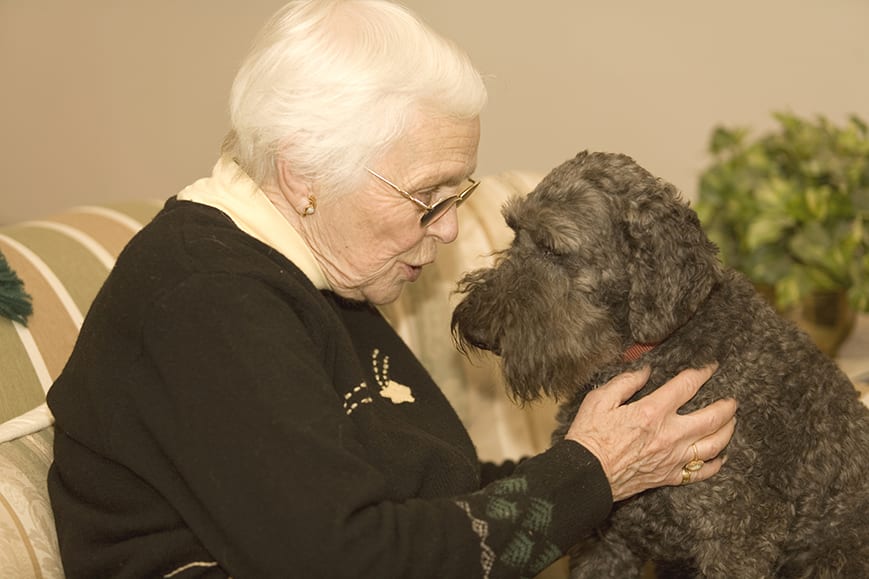
As a newly minted mobile veterinarian, my first home euthanasia experience was anything but perfect. A sweet old Golden Retriever named Sage was about to teach me the importance of options. Intravenous injection of a euthanasia solution is traditionally the most common method to achieving a peaceful death in pets. Having not placed IV catheters for a couple of years (my technicians always did it), I was rusty at finding just the right vein and injection area. I tried the back leg and blew the vein. I tried the front leg and blew the vein. Keeping my composure and calm presence, the family was handling it well, but inside I was really starting to sweat. Not knowing what else to do with people watching me, I proceeded to give an intraperitoneal injection on this 80# dog; now sleeping soundly with her pre-meds. Those of you already in the know understand this is not a good idea. After 15 minutes of listening to Sage’s slow and soft but unending breathing, I had to change course. What other techniques were there for a large dog like this? I had heard of intracardiac injections, but had never done one with people watching. I’m sweating again. As the Gods would have it, I found the heart perfectly and gave the medicine to release Sage from her ailing body. Afterwards, I thought, like many of you probably have over the years with the gift of hindsight, “Why didn’t I just start with that technique?”
There is a change brewing in the world of companion animal euthanasia. More and more veterinarians and technicians are shifting towards intraorgan injections as their preferred method over IV administration, especially those who specialize in end-of-life related veterinary work. I know why I embraced more options, but I wanted to learn more into the reasons why so many others were telling me how they had switched to such techniques as intrahepatic, intrarenal, and intracardiac injections too. To educate myself and gain a better handle on the numbers I was hearing, I conducted a brief study at the 2018 International Association for Animal Hospice and Palliative Care (IAAHPC) conference. There I was presenting an all day course on euthanasia for the Companion Animal Euthanasia Training Academy (CAETA). Of the 250 or so attendees, 83 completed a survey asking about their preferred method of euthanasia for dogs and cats, and why they preferred one technique over another. While 83 people may not sound like a lot, they came from varied backgrounds in mobile and hospital settings and are largely focused on improving the euthanasia experience for their clients and pet patients. And their responses appear right on point with what I’d suspected.
Of the 83 respondents, the favorite euthanasia technique for dogs remained IV injections. IV injections of euthanasia solution has been the gold standard in most countries since the 1960’s. Ranked second was intrahepatic, but when chosen, this one was considered most effective in smaller dogs. Very few ranked it high in larger dogs. Coming in third was intracardiac, of which a few people claim it is their preferred technique even over IV. Intrarenal and intraperitoneal injections were also chosen, but they regularly came in last place. In cats, the preferred technique was also IV injections, but a close second was the rapidly-growing-in-popularity intrarenal injection. Many indicated intrarenal injections were their preferred route in all cats except those who were overweight or in times when the kidneys could not be isolated. Intrahepatic injections for cats came in third and intracardiac and intraperitoneal injections brought up the rear.
So while many still preferred IV injections, many claimed to have switched over to intraorgan injections and only rarely reach for a vein. So why the change for those who clearly preferred the intraorgan route?
Reasons Behind Intraorgan Injection Preference
- No time concerns
- Clients appear comfortable with it
- The practitioner likes more options
- Intraorgan injections are simple; no need to search for a good vein
- Many were already very familiar with it and had performed 1000’s that way
Of those who said they still preferred the IV route, the most common answer was simply that they didn’t know how to do anything else. IV injections are all they had been trained in. Some reflected on the concern about limited appointment times; if the intraorgan injection didn’t go just right, the pet may take a little longer to pass. And all intraorgan injections here in the United States require pets to be unconscious. Giving pre-meds to induce sleep takes more time too. Of the respondents, many felt there should be increased euthanasia education in intraorgan injections and there is merit for further study in intratumor, intrapulmonary, subcutaneous, and oral methods. The Companion Animal Euthanasia Training Academy has begun euthanasia-related studies into various techniques and their reliability.
In summary, I like options and turns out many others do too. While most in our small study said they still preferred IV injections, 34% say they prefer intraorgan injections whenever possible. So if intraorgan injections are to continue in popularity, there needs to be increased euthanasia training, better euthanasia education as a whole leading to improved confidence by the practitioner, and in general, longer appointment times don’t hurt. And in case you are wondering, I prefer intrahepatic injections in small dogs, IV in large dogs, and intrarenal in cats. What a game changer.





